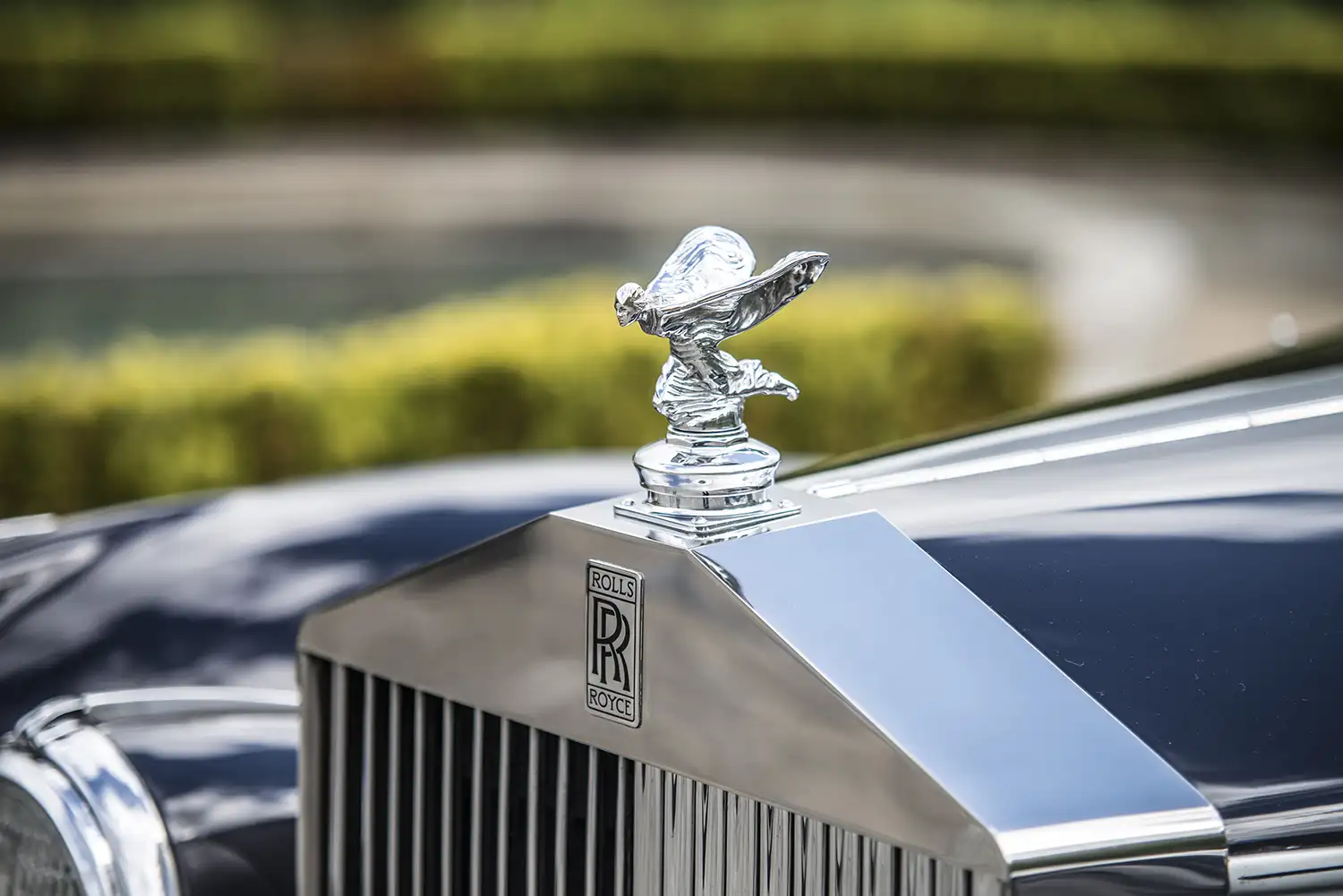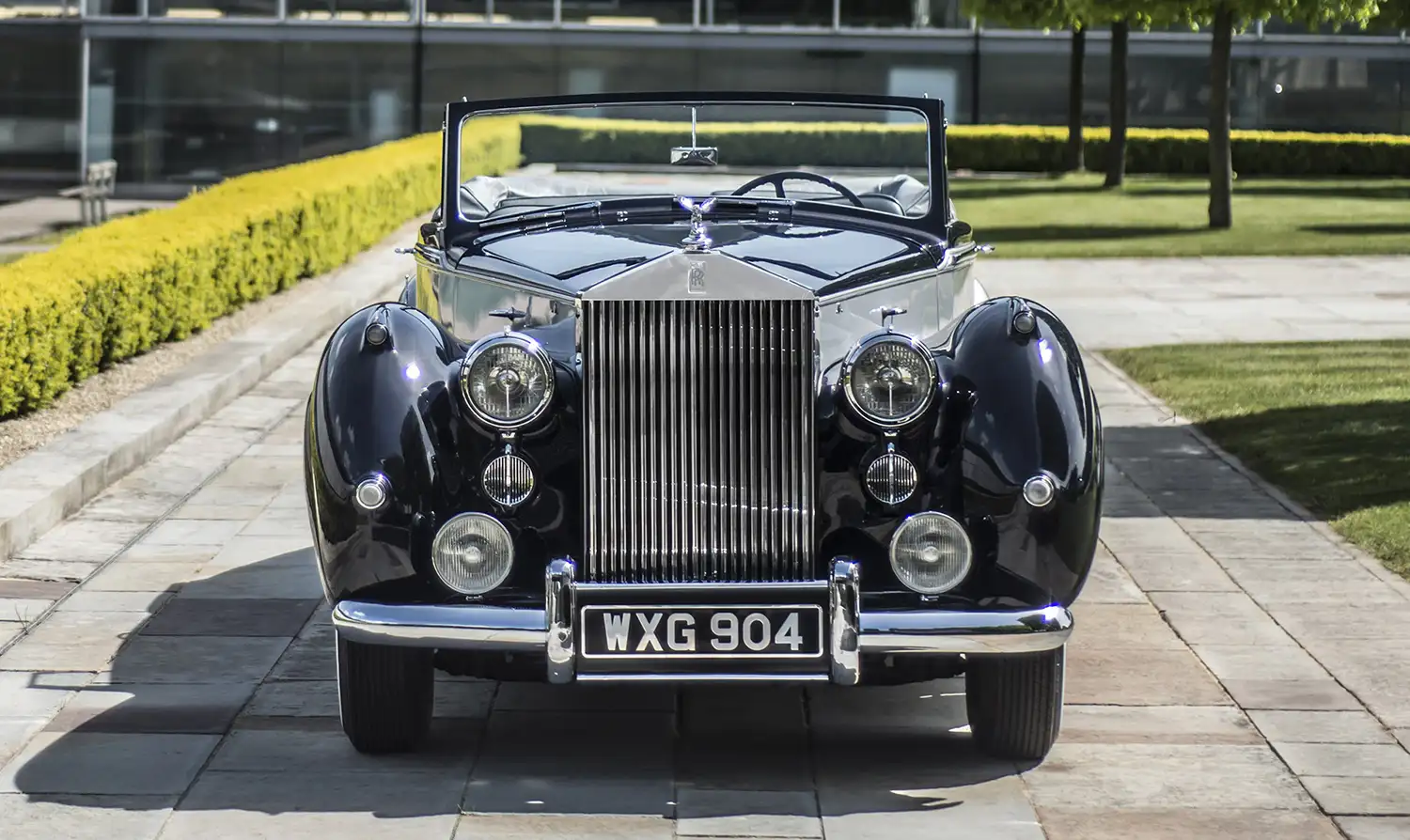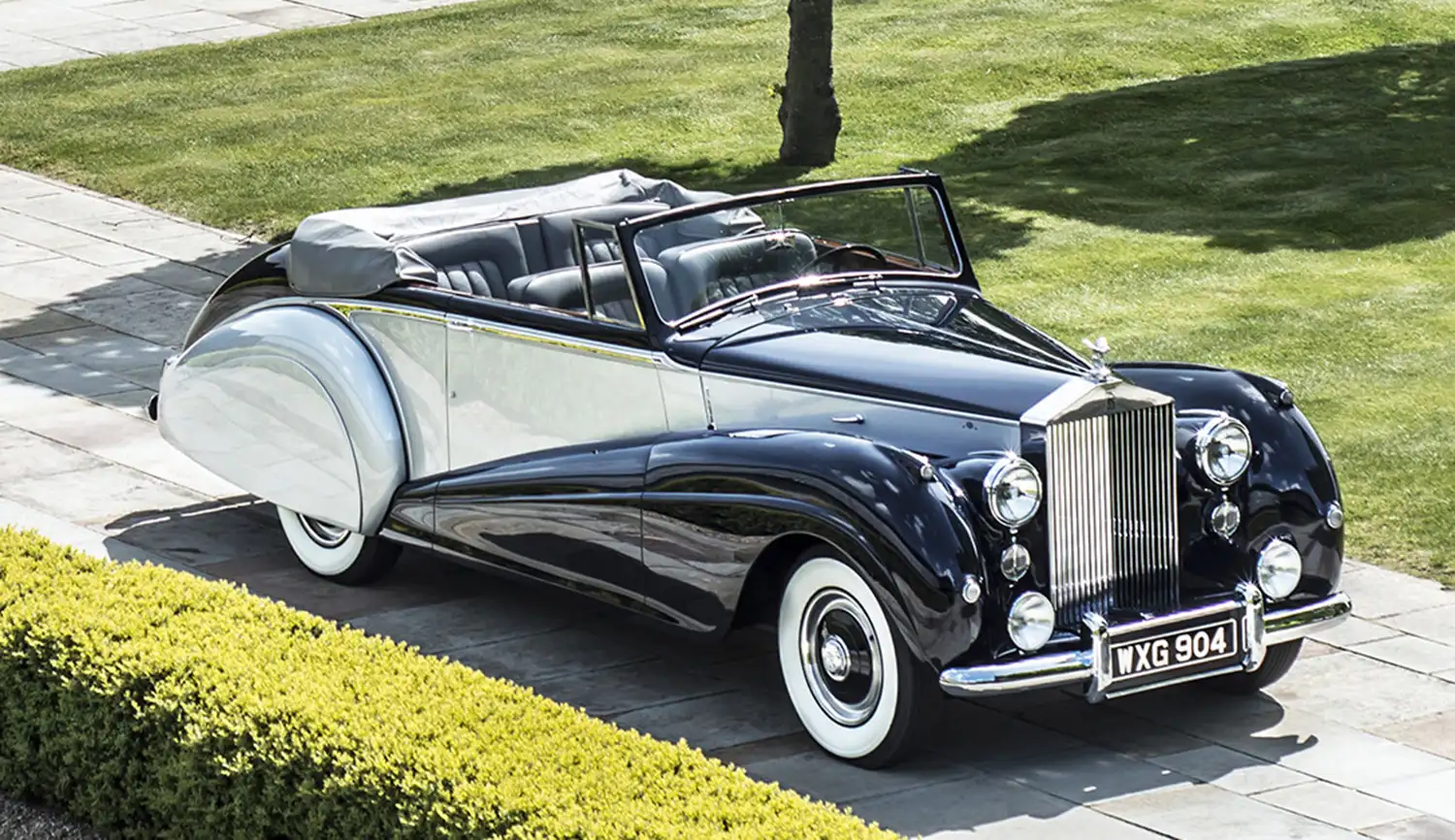
In 1949, Rolls-Royce took a bold step that forever altered its legacy: it introduced the Silver Dawn, its first complete motor car. For the first four decades of the brand’s existence, Rolls-Royce produced only rolling chassis, leaving clients to commission independent coachbuilders for custom bodywork. However, the post-war era demanded a change, and the Silver Dawn reflected this new direction, allowing Rolls-Royce more control over exterior design while navigating a rapidly shifting automotive landscape.
A New Era of Rolls-Royce Design
The Silver Dawn emerged from a time of significant transition. During World War II, Rolls-Royce halted car production to focus on manufacturing aero engines, but behind the scenes, design work continued. Faced with post-war austerity, Rolls-Royce needed to find ways to reduce production costs while maintaining its commitment to quality and performance. The solution came in the form of the ‘Rationalised Range,’ a concept that streamlined production by using a single chassis adaptable to various body styles. This shared approach was a precursor to the Architecture of Luxury, the proprietary aluminium spaceframe that underpins every Rolls-Royce today.
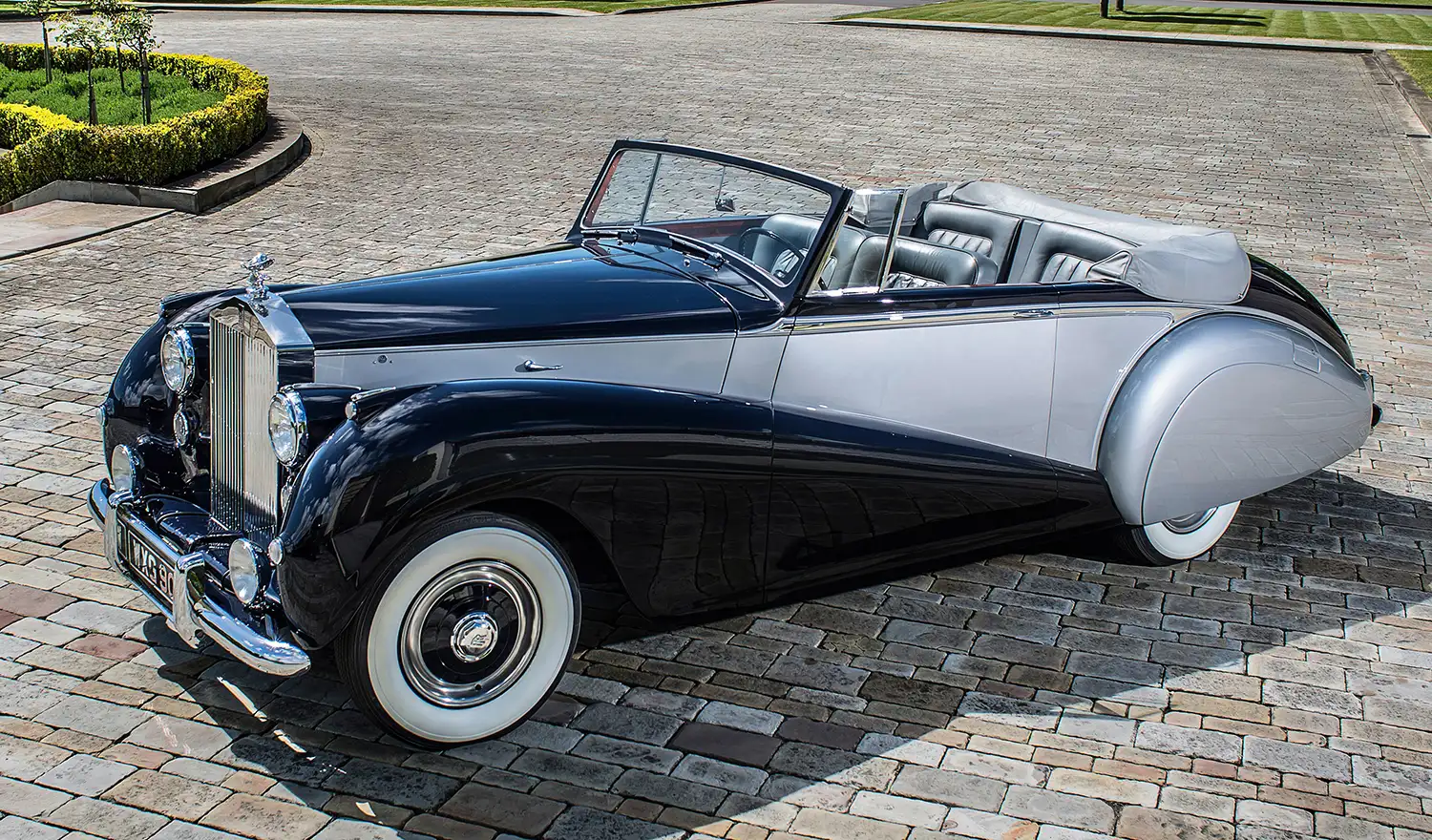
The Silver Dawn’s Place in History
In 1946, Rolls-Royce introduced the Silver Wraith, the first model of the Rationalised Range, followed by the Silver Dawn in 1949. Initially sold as an export model, primarily for North America and Australia, the Silver Dawn became available in the UK in 1952. Unlike the Silver Wraith, the Silver Dawn was offered as a complete motor car, with most units featuring the in-house ‘Standard Steel’ body, marking a shift away from traditional coachbuilt cars.
Out of 761 Silver Dawns produced between 1949 and 1955, 64 were sold as rolling chassis, allowing clients to have their vehicles coachbuilt to personal specifications. The Silver Dawn was also among the last Rolls-Royce models to offer a manual transmission, before the gradual transition to automatic gearboxes—a development that would later culminate in today’s sophisticated eight-speed ZF automatic transmission.
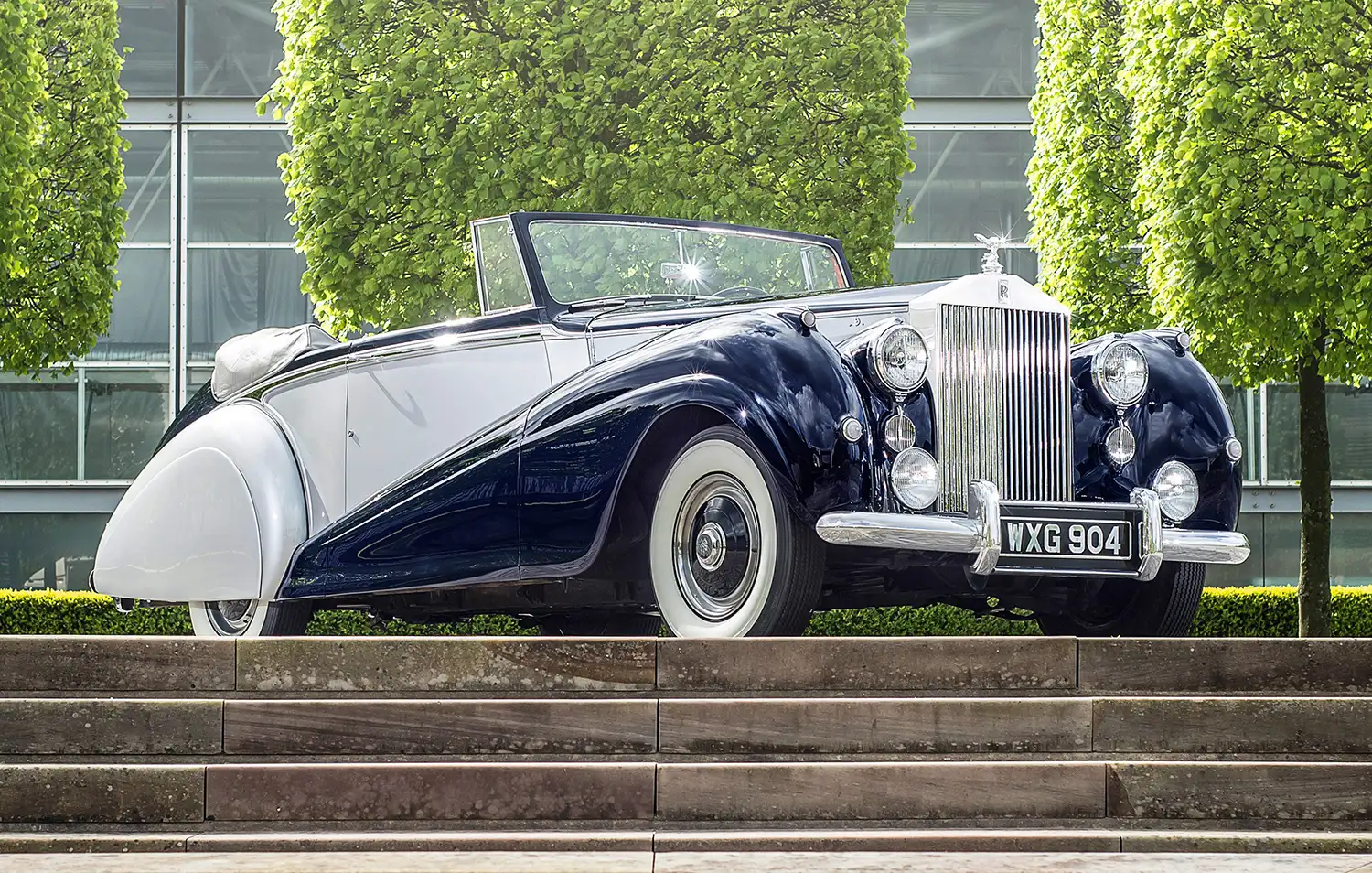
Timeless Craftsmanship and Innovation
John Blatchley, who joined Rolls-Royce after a distinguished career at the coachbuilder Gurney Nutting, was responsible for enhancing the Silver Dawn’s design during its production run. His reworking of the car’s rear section allowed for greater luggage capacity and a more refined aesthetic. Blatchley’s influence on Rolls-Royce design extended well beyond the Silver Dawn, as he later became the marque’s Chief Styling Engineer.
The Silver Dawn name was revived in 2015 with the introduction of the Rolls-Royce Dawn, a convertible model that became the best-selling drophead in Rolls-Royce history by the time production ended in 2023. The legacy of the original Silver Dawn, however, remains an important chapter in Rolls-Royce history, showcasing the brand’s ability to adapt to changing times without compromising its commitment to luxury and craftsmanship.
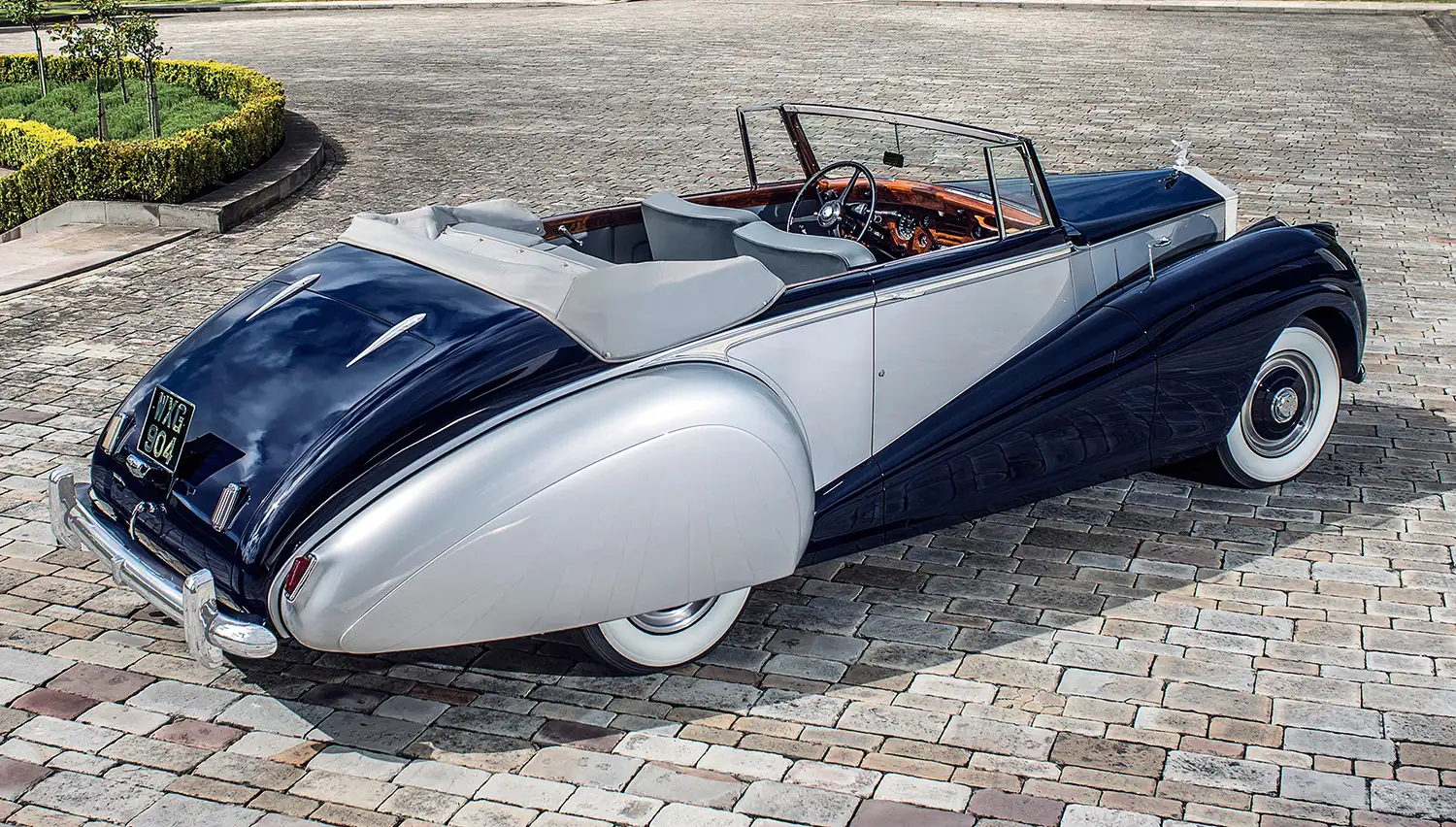
A Legacy of Excellence
Nearly 70 years later, the 1949 Silver Dawn continues to offer an exhilarating driving experience, effortlessly navigating modern traffic with the same poise and comfort that has always defined Rolls-Royce. As one of the brand’s first forays into complete car production, the Silver Dawn holds a special place in Rolls-Royce history, embodying both tradition and innovation. Its timeless appeal endures, offering a glimpse into the evolution of one of the world’s most prestigious automotive brands.
In every sense, the Silver Dawn was – and remains – entirely a Rolls-Royce.
Source: Rolls Royce
This Article use tools from Chatgpt
